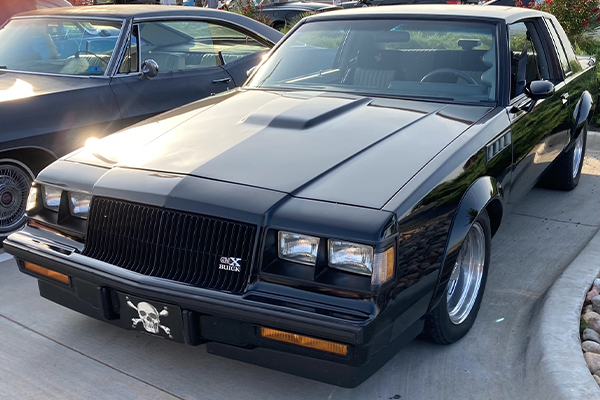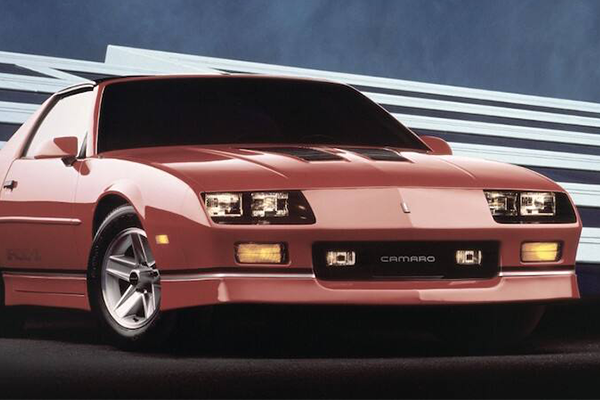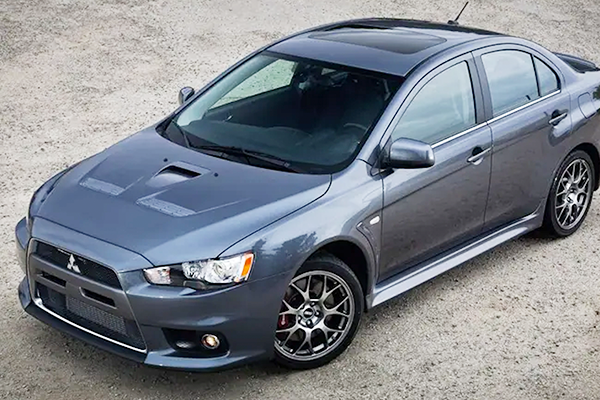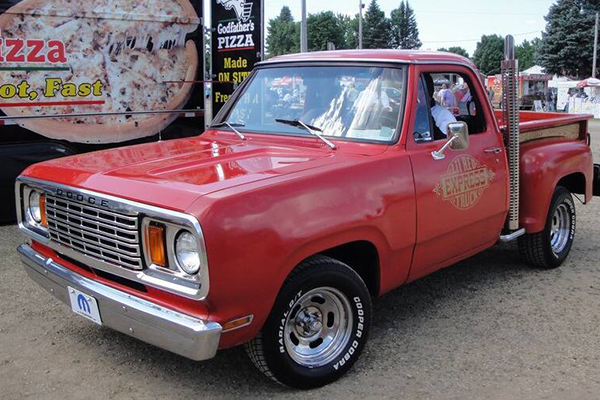
The early 1990s saw a rise in grunge music and an escape from the '80s culture of big hair and parachute pants. Despite these changes, people still loved their off-road trucks and SUVs. Ford saw big success with their other SUV models, but they weren't satisfied. So the Ford Explorer replaced the Ford Bronco II.
Explorer didn't start as a name though. Just six years earlier it could be found on Ford’s F-Series Trucks, serving as a trim package designation stretching all the way back to the late ‘60s. The new Explorer combined the comfort, amenities, and good ride quality of an SUV, with the ruggedness of Ford's popular trucks to help define a whole new market segment.
First Generation: 1990-1994
Introduced in 1990 for the '91 model year, the first generation Explorers, built as a derivative of the Ranger pickup, were equipped with the then new 155 hp (116 kW) 4.0 L Cologne V-6, manufactured in Cologne, Germany. Vehicles came with either Ford's own 4-speed A4LD automatic transmission, built in France, or Mazda's 5-speed M5OD manual transmission.
Similar to its biggest competitor, the Chevy S-10 Blazer, Explorers were available in both four-door and five-door body styles and with either rear-wheel drive or four-wheel drive. The four-wheel drive versions were equipped with a Borg Warner 13–54 part-time four-wheel drive transfer case. Explorers initially came in four trim levels: the base model XL, XLT, Sport, and the upscale Eddie Bauer edition.
Towing capacity on the first Explorer came in at a hefty 5,600 pounds thanks to a four-liter, 155-horsepower V-6 paired with either a four-speed automatic or five-speed manual. But perhaps one of the biggest reasons behind the Explorer’s instant popularity was its decidedly car-like luxuries, including leather seats and high-end audio. Drivers were pleasantly surprised to find such amenities in a truck-like vehicle.
The Explorer placed third in truck sales in 1991, the very first year it was available. Ford knew instantly they had a winner on their hands.
In 1993, the Ford Explorer gained an additional 5 hp and the Limited Edition was added to the lineup. The Limited was available only in the five-door body style and was positioned at the top of the lineup above the Eddie Bauer edition. It featured automatic headlights, an auto-dimming rear-view mirror, fog lamps, a center roof console with compass and outside thermometer, unique wheels and grille, and an automatic transmission as standard equipment. The grill and headlight trims on the Limited edition were paint-matched to the body color, unlike the chrome (XLT) or black plastic (XL) versions on other trim levels.
While many people enjoyed this first-gen Explorer, a common complaint was that the light-duty A4LD automatic transmission didn't lend itself well for towing. It also couldn't handle higher power output from modified engines, and the A4LD suffered premature failure of the 4th gear when used to tow or haul heavy loads.

1995 Ford Explorer, Source | Cars Directory
A face lift and complications
The second generation Ford Explorer, 1995-2001, got a much needed face lift with significant changes in the exterior, interior, and suspension. This generation lost its Ford Ranger looks and came into its own. However, the interior was still shared with the Ranger, and the Ranger chassis were retained. The Ford Explorer lineup consisted then of two models, the three-door Explorer Sport and the five-door Explorer. The Limited was once again the top of the line model.
The 1995 Explorer was a "first" vehicle as it was the first to use a neon center high-mount stop lamp. It was also the first vehicle in its class to have dual front airbags. In 1996, Ford really kicked it up a notch adding a 5.0 L (302ci) 302/"5.0" Windsor V-8 (only for XLT Package) and heavy-duty 4-speed 4R70W automatic transmission.
Going further into this generation, Ford introduced various exterior redesigns including the liftgate, rear bumper, tail lights, fog lights, front bumper, and more. The interior saw changes over the years too, including new interior colors (Medium Prairie Tan replacing the Saddle Tan in 1997), redesigned seats, and the backlighting in the dash changing from blue to green.
Tire complications
In May 2000, the U.S. National Highway Traffic Safety Administration (NHTSA) contacted Ford and Firestone about the high incidence of tire failure on Ford Explorers and other models. Ford investigated and found that several models of 15-inch Firestone tires (ATX, ATX II, and Wilderness AT) had very high failure rates, especially those made at Firestone's Decatur, Illinois plant (one major reason the plant closed).
This setback got worse when Joan Claybrook, president of the public advocacy group Public Citizen and previously an Administrator of the NHTSA at the time, stated before the Transportation Subcommittee United States Senate Committee on Appropriations on September 6, 2000, that, "there was a documented coverup by Ford and Firestone of the 500 defect".
In his September 20, 2000 statement before the Senate Committee on Commerce, Clarence Ditlo, Executive Director for the Centre for Auto Safety Science and Transportation in Washington D.C., stated, "Emerging information shows that both Ford and Firestone had early knowledge of tread separation in Firestone Tires fitted to Ford Explorer vehicles but at no point informed the NHTSA of their findings."
Firestone and Ford issued multiple recalls of these tires and it's suspected that multiple lawsuits were brought against Ford and Firestone for their alleged cover up. The final recall tally was in the multi-millions including 2.8 million Firestone Wilderness AT tires. It was estimated that there had been over 250 deaths and 3,000 serious injuries.
John T. Lampe, at the time Chairman & CEO of Bridgestone/Firestone, announced in a 2001 letter to Jacques Nasser, Ford CEO, that Bridgestone/Firestone would no longer enter into new contracts with Ford Motor Company, effectively ending a 100-year supply relationship. It's hard to overstate how much of a game-changer this was at the time.

2002 Ford Explorer North Face edition, Source | Flickr
Third Gen: '02-'05
Jumping its tire hurdle and with a complete redesign for the 2002 model year, the Ford Explorer got back on its wheels. The five-door Explorer and its sibling, the Mountaineer, were redesigned and looked oddly similar to their sibling the Expedition. The previous generation's 4.0 L SOHC 12 valve V-6 engine carried over, however the Windsor V8 was replaced by the 4.6 L 2V SOHC 16 valve V-8.
A third row seat became available for the first time, bringing total passenger capacity to seven. The Mazda 5-speed manual and the 5-speed Ford C3-derived automatic transmissions were available. However, the 2002 model year was the last year the larger 5-door variant could be ordered with a manual transmission.
For the third generation, Ford installed fully independent rear suspension in the 5-door Ford Explorer. This replaced the previous non-independent rear suspension and allowed increased ride comfort, on-road handling, and vehicle stability. Even though Explorers didn't offer sports-car handling, they were at least more nimble and less truck-like. These improvements weren't enough for some enthusiasts who complained that this new suspension made power delivery suffer as well as load handling.
This generation of Explorer wasn't necessarily received well in the car world. On the automotive consumer review website CarComplaints.com, the 2002 Ford Explorer is ranked as the "Worst Vehicle on Record", largely due to widespread transmission failure at under 100,000 miles of drive time. It is trailed by the 2004 model at #3, the 2003 at #6, and the 2005 at #18.

2006 Ford Explorer XLT, Source | Flickr
Still Trucking
For the 2006 model year, the Explorer was thoroughly updated on a new frame produced by Magna International and given a slight upsize. In addition, Ford updated the interior, redesigned the rear suspension, and added power folding third-row seats. A tire pressure monitoring system as well as electronic stability control became standard this year. Power running boards, like those on the Lincoln Navigator, we made available too.
The 210 hp (157 kW) 4.0L 12-valve SOHC V-6 was once again the standard engine. A more powerful 292 hp (218 kW) 4.6L 24-valve SOHC V-8, similar to the fifth-generation Ford Mustang's engine, was available as an option. The 6-speed 6R automatic transmission, built by Ford and based on a ZF design, was made standard equipment with the V-8 engine as well. The five-speed 5R55W automatic transmission was advanced, and all these improvements helped ramp up fuel economy.
In 2007, The Explorer received a few minor updates, including standard AUX input on all stereos, optional power running boards, a heated windshield, Ironman Package, XLT Appearance Package, and heated leather seat package. The 2008 model saw side curtain airbags. The optional satellite navigation system was also upgraded with voice control.
From 2009-2010, the Explorer received minimal changes and updates, one of which was the Ford MyKey now standard on all Explorer trims.

2012 Ford Explorer Limited, Source | Car and Driver
Reminder: the Explorer is still here
The Ford Explorer is back. Not that it ever went anywhere, but Explorer sales were declining steadily from their peak of nearly 450,000 new vehicles sold in 2000 to a low of just 52,000 sold in 2009. That nearly 90 percent reduction in sales over nine years certainly gave credence to the observation that there just didn’t seem to be as many Explorers on the road, and the feeling that perhaps Explorer was slowly but surely fading from the automotive landscape into the annals of Ford’s highly successful truck history.
And then 2011 happened, when Explorer sales increased more than 100 percent from the previous year and marked the start of a sales rebound that’s continued every year through 2014, the latest year for which full-year sales data is available. The lineup now included trim packages Sport Value, Sport Choice, XLS, Sport Premium, XLT, Eddie Bauer, and Limited, in order of luxury trim-offerings.
So who or what is responsible for the sudden and dramatic resurgence in Ford Explorer’s popularity? Blame it on the fifth generation. Debuting with the 2011 model year, and based on the concept vehicle that Ford unveiled at the 2008 North America International Auto Show, the fifth-generation Explorer was conceived by the same design engineer who held a similar position at Land Rover. Notice any similarities between the Explorer and Land Rover’s Range Rover?
This new generation Explorer definitely looked different than its predecessors. The sharper edges were completely eliminated making way for smooth and contoured lines. Once considered an off-road SUV, the Explorer joined the crossover craze that we know today.
[photo: 2011 Ford Explorer interior; Source | Car and Driver]
Available features on the fifth generation Explorer include intelligent access with push button start, remote engine start, power liftgate, power adjustable pedals with memory, premium leather trimmed seating, and heated and cooled front seats.
Inside, technology got a facelift, adding dual headrest DVD entertainment system, adaptive cruise control, active park assist, SIRIUS Travel Link, MyFord Touch, Ford SYNC by Microsoft, Sony audio system with HD radio and Apple iTunes tagging, and in-dash advanced navigation system. Despite this pretty face, the Explorer is still capable of handling the big stuff with a 5,000 pound towing capacity, available in either front-wheel drive or full-time all-wheel drive. The original engine was the 290 hp (216 kW) (255 lb·ft (346 N·m) of torque) 3.5 liter TiVCT (Twin independent Variable Camshaft Timing) V-6 attached to either the 6-speed 6F automatic or 6-speed 6F SelectShift automatic. Now Ford offers the economical 240 hp (179 kW) (270 lb·ft (370 N·m) of torque) 2 liter EcoBoost turbocharged, direct-injected I-4 mated to the 6-speed 6F automatic. The I-4 engine is not available with the optional 6-speed 6F SelectShift automatic, and is only be available in front-wheel drive
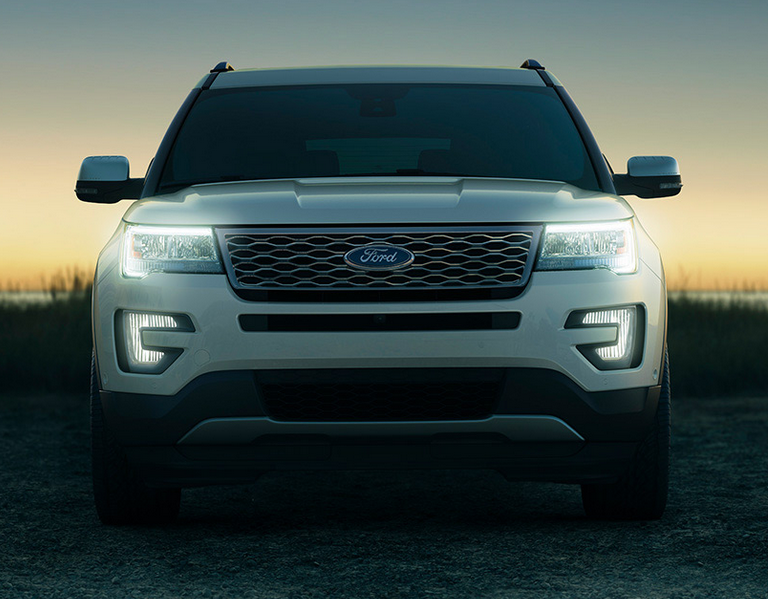
2016 Ford Explorer, Source | MotorTrend
Beauty and grace in an SUV
With four generations and five models in the current generation preceding it, Ford took its time arriving at the 2016 Explorer. Outside, the Platinum-level Explorer impresses with its platinum grille, dual-panel moonroof, hands-free, foot-activated liftgate, and LED lamps, all riding on bright aluminum 20’s featuring painted pockets.
Inside, it’s all luxury, all the time, with wood accents and “Nirvana” (do they take you there?) leather-trimmed seats with “quilted inserts.” USB charging ports and a command center offer so much technology in its display that it looks more like the cockpit of a small plane. Three rows comfortably seats seven. And Enhanced Active Park Assist takes the stress out of navigating virtually any type of parking space.
Under the hood, three engine choices are available with the Platinum--a 2.3 L EcoBoost I-4, a 3.5 L TI-VCT V6 (twin independent variable camshaft timing), or a 3.5 L EcoBoost V6. Getting all that power to the ground is a six-speed, SelectShift automatic transmission and front-wheel drive or four-wheel drive.
Twenty five years later, Ford hasn’t forgotten their roots, or what’s behind the Explorer’s enduring popularity. Explorer drivers want luxury, car-like features, and the towing and cargo capacities of a truck, in a revamped style that looks good doing it all.
Have you ever owned a Ford Explorer? Share your experience with the community. Leave a comment.

